Blood donation is a selfless act that saves lives. Every donation has the power to bring hope to patients and their families. While donors give without expecting anything in return, expressing gratitude can make a big difference. A simple thank you not only acknowledges their kindness but also inspires them to continue their life-saving contributions.
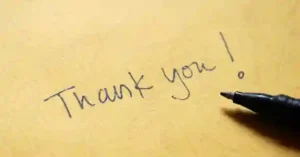
Table of Contents
ToggleWhy Expressing Gratitude Matters
Expressing gratitude to blood donors goes beyond simple politeness—it’s a way to recognize their invaluable contribution to society. Blood donation is a voluntary act that directly saves lives, and saying thank you reinforces the importance of their choice to help others.
Emotional Benefits for Donors
When donors receive a heartfelt thank-you message, it validates their decision to give. It reminds them of the positive impact they’ve made and often leaves them feeling appreciated and fulfilled. This emotional boost can be a powerful motivator for future donations.
Building a Culture of Appreciation
Gratitude fosters a culture where blood donation is celebrated and valued. Publicly or privately thanking donors creates a ripple effect, encouraging others to follow suit. It helps normalize the act of giving and elevates its importance within the community.
Strengthening Donor Relationships
Acknowledging donors’ contributions builds trust and loyalty. Whether through personal notes, social media shoutouts, or public acknowledgments, these gestures make donors feel connected to the cause. This connection can turn a one-time donor into a lifelong supporter.
Encouraging Repeat Donations
A simple thank-you can significantly influence donor retention rates. Studies have shown that donors are more likely to return if they feel their efforts are recognized and valued. Gratitude not only appreciates their past actions but also encourages them to continue making a difference.
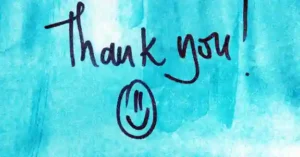
Characteristics of an Effective Thank You Message
Creating a meaningful thank-you message is an art. It must resonate with the donor while conveying genuine appreciation. Here are the essential characteristics that make a thank-you message effective:
Short and Heartfelt
A thank-you message doesn’t need to be long to be impactful. A few sincere sentences can communicate gratitude effectively. Focus on being warm and appreciative, ensuring the message feels personal rather than generic.
Example:
“Thank you for your life-saving gift of blood. Your generosity makes a world of difference!”
Personalization
Personalized messages have a stronger emotional impact. Address the donor by name, if possible, and refer to their specific contribution. Mentioning the donation date or campaign can make the message more meaningful.
Example:
“Dear John, your blood donation on January 10th helped provide critical care to those in need. Thank you for being a hero!”
Positive and Uplifting Tone
The message should focus on the donor’s positive impact and how their contribution makes a difference. An encouraging tone reinforces the value of their efforts and makes them feel appreciated.
Example:
“Your donation brings hope and healing to patients every day. Thank you for being a beacon of kindness!”
Specificity
Whenever possible, highlight the tangible outcomes of their donation. For instance, mention how their blood has helped save lives or supported patients undergoing critical treatments.
Example:
“Thanks to your donation, we were able to provide life-saving care to three patients in need. Your generosity truly changes lives!”
Timeliness
The timing of a thank-you message matters. Sending it promptly after the donation shows that their efforts were noticed and appreciated right away. A delayed thank-you message may feel less genuine.
A Call to Action (Optional)
While the primary purpose is to thank the donor, a subtle call to action can inspire them to continue their contributions. For instance, invite them to donate again or share their experience to encourage others.
Example:
“Thank you for donating! Your kindness inspires others to give. We’d love to see you again at our next blood drive!”

Sample Thank You Messages for Blood Donors
Crafting the perfect thank you message depends on the context and the donor’s specific contribution. Below are examples tailored to various types of blood donors:
General Thank You Messages
These messages are suitable for any donor, regardless of whether it’s their first or repeat donation.
- “Thank you for your selfless act of donating blood. Your kindness is a beacon of hope for those in need.”
- “Your blood donation today has the power to save lives. We’re so grateful for your generosity!”
- “You are a hero! Thank you for giving the gift of life through your blood donation.”
Messages for First-Time Donors
Acknowledging first-time donors is crucial to making them feel valued and encouraging them to become regular contributors.
- “Thank you for taking the first step in becoming a life-saver! Your first blood donation means the world to us and to those in need.”
- “Welcome to the incredible community of blood donors! Your first donation has already made a difference—thank you!”
- “Your first donation is a milestone worth celebrating. Thank you for your kindness and bravery!”
Messages for Regular or Repeat Donors
For regular donors, it’s essential to recognize their ongoing commitment and the cumulative impact of their contributions.
- “Your continued support through regular blood donations is truly inspiring. Thank you for your dedication to saving lives!”
- “Every time you donate, you give someone a second chance at life. We deeply appreciate your consistent generosity.”
- “Thank you for being a loyal blood donor. Your unwavering commitment to this cause is making a significant difference!”
Messages for Specific Campaigns or Emergencies
If a donor participated in a particular campaign or donated during an emergency, acknowledging the circumstances adds depth to the gratitude.
- “Thank you for answering the call during this critical time. Your blood donation is saving lives in urgent need.”
- “Your support during our recent campaign has made a significant impact. We’re grateful for your generosity!”
- “In times of crisis, heroes like you step forward. Thank you for your life-saving blood donation.”
Messages for Corporate or Group Donors
When thanking companies, organizations, or groups that participated in blood drives, emphasize their collective impact.
- “A heartfelt thank you to your team for hosting a blood drive and contributing to this life-saving cause. Together, you’ve made a difference!”
- “We deeply appreciate your organization’s commitment to saving lives. Thank you for being such a vital part of our mission!”
- “Your company’s participation in our blood drive has brought hope to countless lives. Thank you for your generosity and teamwork!”
Thank You Messages with Inspirational Notes
Inspiring donors with the significance of their actions can make the message even more impactful.
- “Every drop of blood you’ve donated is a drop of hope for someone in need. Thank you for being their lifeline.”
- “Your kindness doesn’t just save lives—it inspires others to give, too. Thank you for being a role model of generosity.”
- “The impact of your blood donation reaches far beyond today. Thank you for giving hope to so many.”
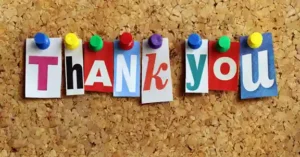
Thank You Messages from Organizations
Organizations, such as hospitals, blood banks, and charities, play a vital role in collecting and distributing blood donations. Expressing gratitude on behalf of these organizations is essential to acknowledge donors’ contributions, strengthen relationships, and encourage continued support. Below are ways organizations can craft and deliver impactful thank-you messages.
General Organizational Messages
These messages are ideal for routine acknowledgments sent to donors after a blood donation.
- “On behalf of [Organization Name], thank you for your life-saving blood donation. Your generosity helps us provide critical care to those in need.”
- “Your recent blood donation with [Organization Name] is a true act of kindness. Together, we’re saving lives and bringing hope to countless individuals.”
- “We deeply appreciate your support in donating blood. Your selflessness is at the heart of our mission to save lives.”
Messages Highlighting Donor Impact
Personalizing the message to emphasize the tangible results of their donation can make it more meaningful.
- “Thanks to your donation at [Organization Name], we’ve been able to provide essential blood supplies to local hospitals. You’ve made a direct difference in the lives of patients.”
- “Your blood donation helped ensure a steady supply of life-saving resources during a critical time. Thank you for partnering with us in this vital mission.”
- “Because of you, lives are being saved every day. [Organization Name] is proud to have your support in creating a healthier, stronger community.”
Messages for Special Campaigns or Milestones
Recognizing participation in specific events or donor milestones is a great way to make donors feel special.
- “Thank you for being part of our recent blood drive. Your participation helped us exceed our goal and bring hope to many patients in need.”
- “Congratulations on reaching [donor milestone, e.g., 10th donation]! We’re so grateful for your ongoing support and commitment to saving lives.”
- “Your contribution during our [specific campaign] has been extraordinary. Together, we’ve created a lasting impact for those in urgent need.”
Holiday or Seasonal Messages
Organizations can use special occasions or holidays to send themed thank-you messages that feel timely and thoughtful.
- “This holiday season, we’re especially grateful for donors like you. Thank you for sharing the gift of life and hope with others.”
- “As we reflect on gratitude during Thanksgiving, we want to thank you for your incredible support in saving lives.”
- “Your generosity shines brighter than ever this summer. Thank you for donating blood and being a hero to those in need.”
Messages for Group or Corporate Donors
When organizations work with companies or community groups, acknowledging their collective efforts strengthens partnerships.
- “A huge thank you to [Company/Group Name] for hosting a blood drive and contributing to our life-saving mission. Your team’s efforts have brought hope to many!”
- “We’re honored to partner with [Company/Group Name] to make a difference. Your commitment to supporting blood donation is inspiring!”
- “Together, we’ve achieved something remarkable. Thank you to everyone at [Company/Group Name] for your generosity and teamwork.”
Delivery of Messages by Organizations
Organizations can maximize the impact of their thank-you messages through thoughtful delivery:
- Handwritten Notes: Personalize thank-you cards for an extra touch of warmth and sincerity.
- Emails or SMS: Send timely acknowledgments through digital channels, ensuring donors feel appreciated right after their contribution.
- Social Media Shoutouts: Publicly recognize donors or groups to inspire others to donate.
- Certificates or Tokens: Provide certificates of appreciation, small gifts, or exclusive badges for milestone donors.
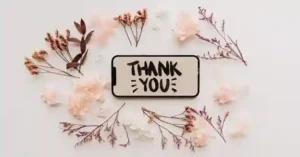
Thank You Messages from Recipients
When thank-you messages come directly from the individuals whose lives have been saved or improved by blood donations, they carry an emotional weight that deeply resonates with donors. These messages create a personal connection, making the impact of the donation tangible and heartfelt.
The Importance of Recipient Thank You Messages
Messages from recipients personalize the act of blood donation. They provide donors with a direct view of the difference they’ve made in someone’s life, reinforcing the value of their generosity. These messages can also serve as powerful motivators for repeat donations and inspire others to donate.
Examples of Thank You Messages from Recipients
General Recipient Messages:
- “Thank you for your blood donation. Because of you, I’ve been given a second chance at life. Your kindness means everything to me and my family.”
- “I don’t know your name, but I know your heart. Your donation has brought hope and healing into my life. Thank you for being a hero.”
- “Your blood donation helped me recover from surgery and spend more precious moments with my loved ones. I’ll forever be grateful.”
Messages from Families of Recipients:
- “Your selflessness saved my loved one’s life. Words cannot express the gratitude we feel for your incredible gift.”
- “Because of your blood donation, we were able to celebrate another birthday with our son. Thank you for making this possible.”
- “Your generosity gave our family a chance to stay whole. Thank you for saving my partner’s life.”
Messages for Donors of Rare Blood Types:
- “Your rare blood type has been a blessing to me during a critical time. Thank you for going the extra mile to help those in need.”
- “Finding a match was not easy, but your donation made all the difference. I’m alive today because of you.”
The Emotional Impact on Donors
Messages from recipients often create a profound emotional connection with donors. Knowing the personal stories behind their donations helps donors realize the true significance of their generosity. This emotional reinforcement motivates them to remain committed to the cause.
How Organizations Can Facilitate Recipient Messages
Organizations can play a pivotal role in bridging the gap between recipients and donors:
- Anonymous Letters: Facilitate anonymous thank-you notes from recipients to protect privacy while fostering connection.
- Video Testimonials: Share stories of recipients through videos that highlight how donations have changed their lives.
- Impact Reports: Include recipient stories in newsletters or campaign updates sent to donors.
Encouraging Recipients to Share Gratitude
Recipients and their families may not always know how to express their gratitude. Organizations can encourage them by:
- Providing templates or prompts for writing thank-you notes.
- Hosting events where recipients can share their stories and thank donors in person.
- Creating online platforms or forums for recipients to share their experiences publicly.
Inspiring Others Through Recipient Stories
Recipient thank-you messages don’t just inspire donors—they also encourage others to join the cause. When potential donors see the real-life impact of blood donation, they’re more likely to participate and contribute.
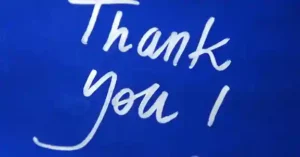
Incorporating Gratitude into Blood Donation Campaigns
Gratitude is a powerful tool for enhancing the effectiveness of blood donation campaigns. By incorporating thank-you messages and appreciation strategies, campaigns can attract new donors, retain existing ones, and create a positive atmosphere around the act of giving. Here’s how organizations and individuals can integrate gratitude into their blood donation efforts.
Expressing Gratitude During Donation Events
Personal Thank-Yous:
Greet donors warmly upon arrival and thank them for their contribution. Ensure every donor receives a personalized thank-you as they complete their donation.
Tokens of Appreciation:
Offer small thank-you gifts, such as stickers, pins, or bracelets, to remind donors of their impact. Provide refreshments with messages of gratitude printed on napkins, cups, or posters.
Volunteer Involvement:
Train staff and volunteers to express genuine appreciation to donors at every stage of the event. Encourage volunteers to share inspiring stories of recipients as part of the thank-you process.
Post-Donation Follow-Up
Thank-You Emails or Texts:
Send immediate follow-up messages thanking donors for their contribution and explaining the potential impact. Include personalized elements, such as the date of donation or the donor’s blood type.
Social Media Shoutouts:
Use platforms like Facebook, Instagram, or Twitter to publicly acknowledge donors (with their permission). Create posts featuring donor photos, campaign highlights, and gratitude messages to inspire others.
Certificates of Appreciation:
Mail or email donors a certificate recognizing their life-saving act. Consider including a personalized note or the approximate number of lives their donation could impact.
Creative Campaign Ideas Focused on Gratitude
“Wall of Heroes”:
Set up a physical or virtual wall displaying the names or photos of donors as a tribute to their generosity.
Thank-You Video Campaigns:
Create videos featuring recipients, staff, or volunteers thanking donors for their life-saving contributions. Share these videos through social media, email campaigns, or local media outlets.
Gratitude Events:
Host donor appreciation events, such as luncheons, award ceremonies, or community gatherings, to celebrate and honor donors. Invite recipients to share their stories at these events to deepen the emotional connection.
Using Gratitude to Encourage Repeat Donations
Impact Updates:
Share periodic updates with donors about how their contributions are making a difference, such as the number of lives saved or the success of specific campaigns.
Exclusive Rewards:
Offer recognition for milestones, such as cumulative donations or years of participation. Examples include pins, certificates, or exclusive donor perks.
Encouragement for Future Participation:
Include a thank-you message in reminders for upcoming blood drives, emphasizing the ongoing need and the donor’s critical role.
Leveraging Social Media for Gratitude
Hashtag Campaigns:
Create a unique hashtag, such as #ThankYouDonors, to share donor appreciation messages and encourage others to participate.
Recipient Stories:
Post testimonials or short stories from recipients highlighting how donors have impacted their lives.
Interactive Content:
Share polls, quizzes, or challenges that engage followers while emphasizing gratitude for donors. For example, “Guess how many lives one blood donation can save!”
Partnering with Local Businesses for Gratitude Campaigns
Collaborative Thank-You:
Partner with local businesses to offer discounts or freebies to donors, such as a free coffee or meal voucher.
Community Boards:
Work with businesses to display thank-you messages for donors on their premises or social media channels.
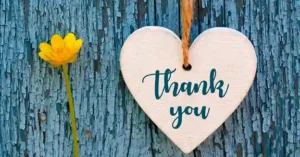
Inspiring Others Through Gratitude
Gratitude has the power to do more than acknowledge blood donors—it can inspire others to follow in their footsteps. When people see how appreciated and impactful donors are, they’re more likely to consider giving blood themselves. Here’s how gratitude can serve as a catalyst for spreading awareness and encouraging others to join the cause.
Sharing Donor Stories
Stories have the unique ability to connect emotionally with people. Highlighting the experiences of blood donors can inspire others by showing the humanity behind their actions.
- Personal Testimonials: Share interviews or written testimonials from donors about their motivations and the satisfaction they feel after donating.
- Milestone Achievements: Celebrate donors who have reached significant milestones, such as their 10th, 25th, or 50th donation, and use their stories to inspire others.
- Donor Spotlights: Regularly feature individual donors on social media or newsletters, thanking them publicly and sharing their impact.
Amplifying Recipient Gratitude
Hearing directly from those whose lives were saved or improved by blood donations can be a powerful motivator for potential donors.
- Recipient Videos: Share video messages from patients or families expressing their heartfelt thanks to donors. These authentic moments can inspire a deep emotional connection.
- Before-and-After Stories: Highlight stories of recipients who overcame critical health challenges thanks to blood donations, showing the transformative impact of giving.
- Family Gratitude Campaigns: Feature messages from families of recipients to emphasize how donations ripple outward, affecting entire communities.
Encouraging Peer Advocacy
When donors share their gratitude experiences, it can encourage others in their social circles to participate.
- Social Media Challenges: Launch campaigns where donors post about their donation experience with a thank-you message and encourage friends to donate. For example, “I donated blood today—thank you to all donors who make this possible! Who’s joining me next?”
- Word-of-Mouth Advocacy: Encourage donors to bring a friend or family member to the next blood drive by emphasizing the rewarding nature of giving.
- Referral Programs: Offer small incentives or tokens of appreciation to donors who successfully refer others to donate.
Leveraging Public and Media Platforms
Publicizing the act of gratitude through media can reach broader audiences and inspire large-scale participation.
- Gratitude Events: Host public events celebrating blood donors, such as appreciation ceremonies or blood drive anniversaries, and invite local media to cover them.
- Press Releases: Share stories of donor appreciation campaigns, milestones, or recipient gratitude with news outlets to create buzz around blood donation efforts.
- Billboards and Ads: Display messages of gratitude on public platforms, such as “Thank You, Blood Donors—Your Generosity Saves Lives!” paired with calls to action.
Creating a Gratitude-Focused Community
Building a culture of gratitude within the donor community fosters a sense of belonging and inspires ongoing contributions.
- Online Communities: Create forums, groups, or social media pages where donors can share their experiences, thank one another, and encourage new donors.
- Recognition Programs: Implement tiered recognition programs (e.g., “Bronze, Silver, Gold Donor”) to celebrate repeat donors and encourage others to achieve similar milestones.
- Community Engagement: Partner with schools, workplaces, or local organizations to organize gratitude-themed blood drives that highlight the importance of giving.
Spreading Gratitude through Educational Campaigns
Incorporating gratitude into educational initiatives can motivate people to view blood donation as an essential act of kindness.
- Workshops and Seminars: Host events that educate the public on the importance of blood donation while sharing stories of gratitude from donors and recipients.
- Youth Campaigns: Introduce gratitude-focused campaigns in schools, encouraging students to thank donors and consider donating when eligible.
- Gratitude in Marketing: Use compelling visuals and heartfelt thank-you messages in promotional materials to attract attention and inspire participation.
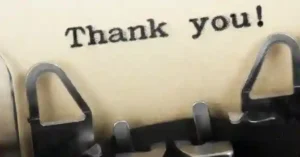
Using Thank You Messages to Build Long-Term Relationships with Donors
Blood donation is not a one-time act for many donors; it’s an ongoing commitment to saving lives. One of the most effective ways to encourage long-term engagement with donors is by using thank-you messages that go beyond just immediate acknowledgment. By showing genuine appreciation and fostering emotional connections, organizations can build lasting relationships with their donors. Here’s how to use gratitude to maintain these vital connections.
Consistent and Personalized Thank-You Messages
To create a lasting bond, thank-you messages should be personalized and consistent. Donors who feel valued are more likely to return and continue their support.
- Tailored Thank-Yous: Personalize messages based on the donor’s donation history, such as recognizing the number of times they’ve donated or the specific impact of their last donation.
- Handwritten Notes: For milestone donors or significant contributions, send handwritten notes. This small but meaningful gesture makes donors feel like they’re truly valued.
- Email and SMS Updates: Use email or text messages to acknowledge donors immediately after they donate and keep them updated on how their contributions have made a difference.
Highlighting Donor Impact and Progress
Donors want to know that their contributions are having a significant impact. By continuously updating them on the difference their donations make, organizations can foster a sense of pride and ownership in the cause.
- Impact Reports: Send donors regular reports that include information about how many lives were saved through their contributions, the blood types in demand, and how their efforts are helping during emergencies or special campaigns.
- Infographics and Visuals: Create visually engaging content like infographics that show how blood donations help save lives. Donors can see tangible results, which reinforces their connection to the cause.
- Testimonials from Recipients: Share recipient stories to show the human side of their donation. Knowing exactly who they’re helping and how their donation has made a difference increases emotional investment.
Exclusive Invitations to Donor Events
To strengthen relationships with repeat donors, invite them to special events or recognition activities. These events allow donors to feel celebrated, which encourages them to stay engaged.
- Thank-You Events: Organize special recognition events, such as annual donor appreciation dinners, where donors can meet other life-savers, hear from recipients, and enjoy exclusive recognition.
- VIP Blood Drives: Offer invitations to exclusive blood drives or VIP donation events where donors can experience the impact of their contributions firsthand and engage with others in the community.
- Webinars and Online Meet-Ups: For donors who may not be able to attend in-person events, consider hosting virtual gatherings or webinars where donors can learn more about the impact of their donations and connect with staff and recipients.
Creating a Donor Loyalty Program
A formal donor loyalty program can help cultivate long-term relationships by providing recognition and rewards to donors for their ongoing commitment.
- Milestone Recognition: Reward donors with certificates or badges for their contributions, such as for every fifth or tenth donation. These milestones reinforce their dedication and encourage repeat donations.
- Exclusive Benefits: Offer special perks for loyal donors, such as priority booking for donation appointments, personalized donor gifts, or discounts at local businesses in partnership with the blood donation organization.
- Donor Levels: Create tiered recognition levels, where donors who give more frequently or in larger quantities receive special benefits like pins, plaques, or even public acknowledgments.
Soliciting Feedback and Engagement
To ensure donors feel heard and valued, actively solicit feedback about their donation experience and incorporate it into future campaigns.
- Donor Surveys: Send out occasional surveys asking for feedback on the donation process, thank-you messages, and overall experience. Use this input to improve future donor interactions.
- Engagement in Future Campaigns: Involve donors in the planning or promotion of future blood drives. By giving them a role in upcoming campaigns, donors will feel like a crucial part of the organization’s efforts.
- Volunteer Opportunities: Encourage donors to become more involved by offering them opportunities to volunteer at blood drives or community events. This can deepen their connection to the cause and extend their relationship with the organization.
Ongoing Education and Awareness
Continuously educating donors about the ongoing need for blood donations can help them feel connected to the cause and motivated to return.
- Newsletters: Send out regular newsletters that not only thank donors but also educate them on current blood shortages, new health guidelines, and the importance of blood donations.
- Donation Reminders: Use timely reminders to encourage regular donation. For example, “It’s been three months since your last donation—help save lives again today!”
- Success Stories: Share success stories of recipients who have thrived due to consistent blood donations, reinforcing the importance of regular giving and showing donors the long-term impact of their commitment.
Celebrating the Donor Community
Donors are more likely to stay engaged when they feel like they are part of a larger community working towards a common goal. Highlighting the collective efforts of donors can create a sense of belonging.
- Community Spotlights: Share stories about how the community of donors has come together to meet urgent needs, such as during a disaster or emergency. This highlights the power of collective action.
- Donor Tributes: Dedicate posts, newsletters, or physical spaces (such as a donor wall) to celebrate the collective impact of donors, helping them feel part of something larger than just their individual contributions.
- Public Acknowledgment: Recognize donors in local publications, websites, or at events to showcase their contributions to the community. Public recognition can be a strong motivator for continued involvement.
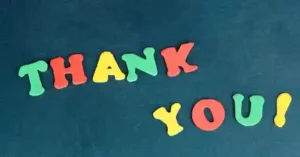
Conclusion
In conclusion, expressing genuine gratitude to blood donors is an essential part of fostering a strong, supportive community committed to saving lives. Whether through personalized thank-you messages, highlighting the direct impact of donations, or creating long-term relationships with donors, appreciation plays a pivotal role in ensuring donors feel valued and motivated to return. By incorporating gratitude into every step of the blood donation process—before, during, and after donation—organizations can build lasting connections with donors, inspire new contributions, and ultimately create a sustainable and thriving blood donation network. A simple thank you has the power to save lives, build trust, and encourage others to join the cause, making a profound difference for years to come.

